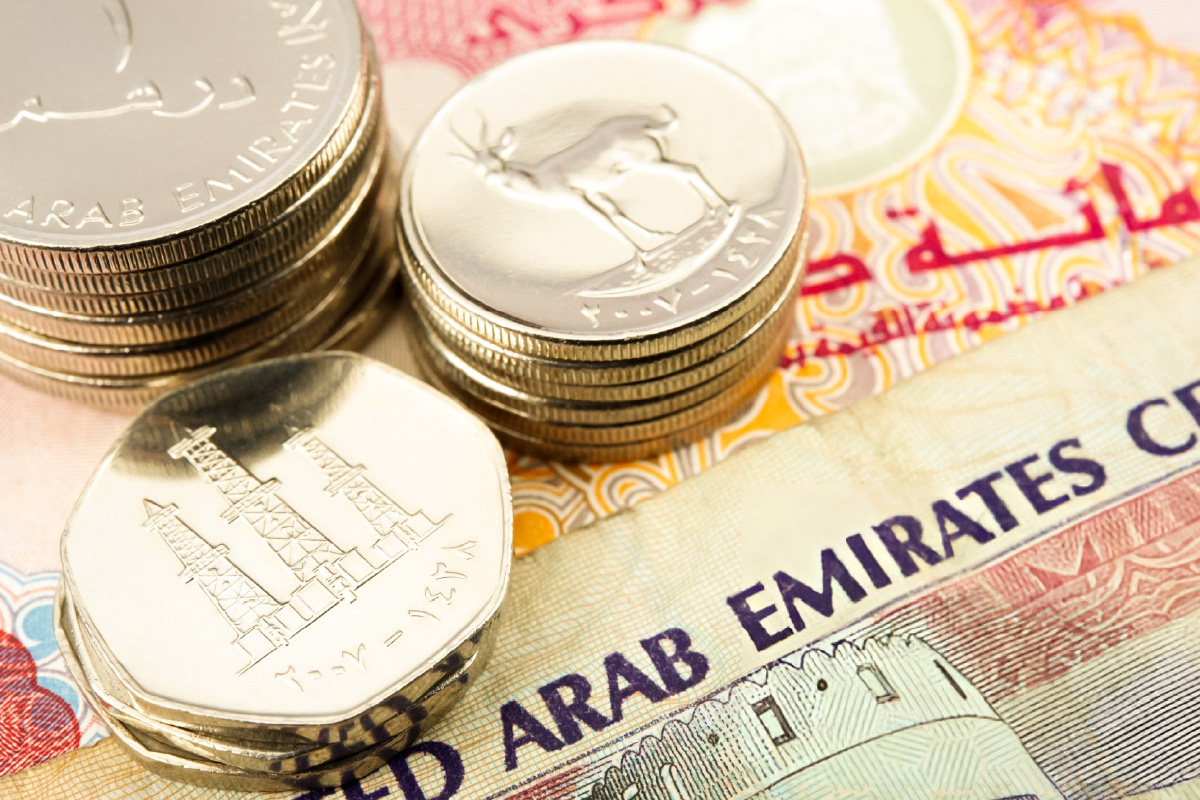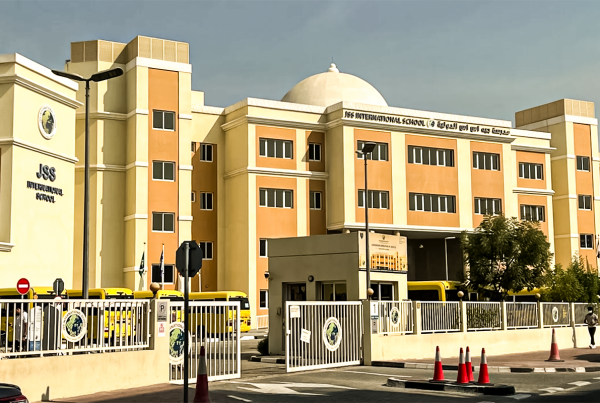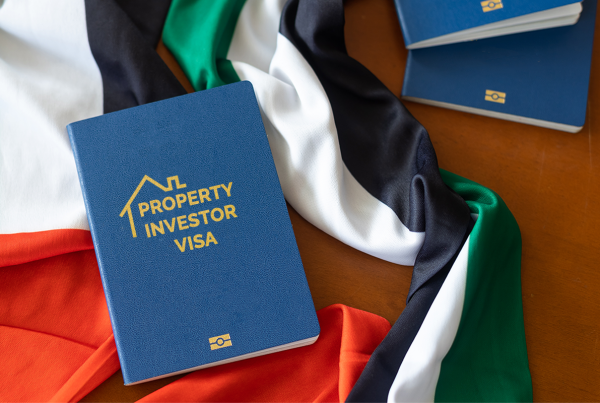The UAE Dirham is the official currency of the United Arab Emirates that came into existence on 19 May 1973, taking the place of the Qatar Riyal. The UAE Dirham is commonly abbreviated as Dh and Dhs. It is further categorized into coin denominations of 1, 5, and 10 fils, as well as banknotes in various denominations like 5, 10, 20, 50, 100, 200, 500, and even 1000 Dirhams.
The main reason for introducing UAE Dirham was to make the economy steady during the rapid growth of oil exports. Upon its initial launch, the currency was pegged to the US dollar at a fixed exchange rate of 3.6725 AED for every 1 USD. Over time, adjustments were made to its size and material, and newer coin types were also released.
The UAE Dirham is significant in the realm of global finance, serving as a reserve currency and enjoying popularity in forex trading. Its fixed exchange rate with the US dollar has played a large part in keeping the country’s economy steady and drawing in global investors. The value of the Dirham also affects both economic conditions in the UAE and its position in international trade.
UAE Dirhams Origin and History
Origin
The UAE Dirham, which was first introduced on 19th May 1973, replaced the Bahraini Dinar, Qatari Riyal, and Dubai Riyal. Historically, the Qatari Riyal was the predominant currency utilized throughout all the Emirates, except for Abu Dhabi.
When the currency was first introduced, coins were in denominations of 1, 5, 10, 25, 50 fils and 1 Dirham, and the inscriptions on the coins were in Arabic, and the numbers were in Eastern Arabic numerals. Banknotes were first issued in denominations of 1, 5, 10, 50, 100, and 1000 Dirhams. The term Dirham is derived from the Greek word Drachma, which translates to handful.
History
The UAE introduced its first Dirham in 1973. In 1997, it tied its value to the US Dollar because the country’s economy relied on oil. By 2006, the nation had faced trouble with fake currency. People realized the One Dirham coin matched the size of the Philippine One Peso coin. Since One Peso was worth less than one UAE Dirham, vending machines became a common target for fraud.
Similar problems arose with coins like the 5 Pakistan Rupee, 50 Omani Baisa, and 1 Moroccan Dirham. To tackle these issues, the central bank added a falcon watermark to help stop the fraud.
UAE Currency Bank Notes
The UAE began printing its own banknotes on May 20, 1973. They started with 1, 5-, 10-, 50-, and 100-Dirham denominations from the start. Three years later, they introduced a 1,000 Dirham note.
Over time, they made changes by adding new notes and phasing out old ones. In 1983, they released a 500 Dirham note, and in 1989, they launched a 200 Dirham note. Following its discontinuation, the 1,000 Dirham note was brought back into circulation in 2000.
Banknotes appear in these denominations today: Dhs5 in brown, Dhs10 in green, Dhs20 in light blue, Dhs50 in purple, Dhs100 in pink, Dhs200 in greenish brown, Dhs500 in navy blue, and Dhs1,000 in greenish blue.
The front side uses Arabic text and Eastern Arabic numerals, while the reverse side shows English text with standard numbers.
In recent years, the UAE has started utilizing polymer for the production of banknotes. These notes last longer and include advanced security features. In 2021, they introduced the first polymer note, a Dhs50 bill, to mark 50 years since the country’s founding. They later released Dhs5 and Dhs10 polymer notes in 2022. By 2023, Dhs1000 and Dhs500 notes also switched to polymer.
UAE Currency Coins
In 1973, the UAE introduced its first coins. These were available in denominations of 1, 5, 10, 25, and 50 fils, in addition to 1 Dirham. The smallest coins, which included the 1, 5, and 10 fils, were made of bronze, while the bigger coins were crafted from copper and nickel alloy.
A redesign happened in 1995, making some coins smaller in size. The 50 fils coin was given a unique seven-sided shape. The coins feature their numbers and values in Eastern Arabic numerals, with the text written in Arabic.
The 1, 5, and 10 fils coins don’t get much use these days. Most of the time, prices are rounded up or down to the nearest 25 fils. Spotting a 1 fils coin is pretty uncommon now. Individuals frequently confuse the older 50 fils coin with the present 1 Dirham coin due to their similar sizes.
Since 1976, the currency board of the UAE, followed by its Central Bank, has produced commemorative coins to pay tribute to significant events or prominent figures in the country.
Commemorative Coins
In addition to coins for daily use, the CBUAE produces special commemorative coins that mark key moments and accomplishments of the UAE.
Government agencies, financial institutions, and the CBUAE have the right to ask the CBUAE to produce a commemorative coin in gold, silver, or standard circulation to celebrate a significant event.
Factors That Have an Impact on the UAE Currency in 2025
The UAE remains a symbol of economic strength and growth in a world of changing global markets. However, the UAE Dirham (AED), like all currencies, is shaped by different elements that affect the financial landscape. Below are some factors to understand how the currency behaves in 2025.
1. Currency Exchange Rates Around the World
The United Arab Emirates plays an important role in the world economy and feels the effects of shifts in global currency exchange rates. The bond between the UAE Dirham and the US Dollar (USD) holds particular importance. The USD often acts as a standard in many global trades, including oil prices. Therefore, when the USD fluctuates, it may trigger a chain reaction affecting the Dirham.
When the USD gains strength compared to other major currencies, the Dirham might also rise in value. On the flip side, if the USD loses strength, the Dirham might drop in value.
2. Oil Prices and Economic Diversification
One big factor that affects the UAE currency is the ups and downs of oil prices. The UAE has relied a lot on exporting oil in the past. When oil prices change around the world, it hits the country’s economy. The UAE has worked hard to widen its economy, so it does not lean so much on oil anymore. How well this plan works is key to keeping the currency steady.
3. Global Economic Trends
The global economy is connected in many ways, so outside trends can affect the UAE’s currency too. Things like how well major trade partners’ economies are doing or shifts in global trade rules matter. Worldwide economic slumps can also shake up investor trust and money movement, which could then change how strong the Dirham is.
To Sum Up
To sum up, many factors connect the stability and success of the UAE’s currency, the Dirham. The country’s push to grow beyond oil and its careful handling of financial and monetary decisions will be key in facing the challenges of the shifting global economy. Moving through 2025, staying alert and adjusting to the changing patterns of the world economy will be crucial if the UAE wants to keep its standing as a regional financial leader.









